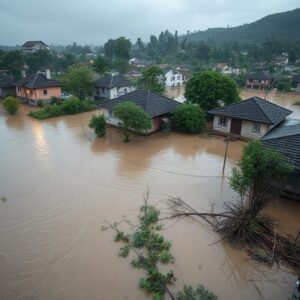Water is a finite resource that is essential to all life on Earth. Despite covering about 71% of the planet’s surface, only 2.5% of the world’s water is fresh, and less than 1% of that is accessible for human consumption. As the global population grows and climate change puts more pressure on water supplies, it becomes increasingly important to conserve water in our daily lives. By understanding the significance of water conservation and making small, mindful changes, we can all contribute to safeguarding this precious resource.
The Importance of Saving Water
Water is critical to life in countless ways: from drinking and sanitation to agriculture, industry, and energy production. The availability of clean, fresh water is not only a basic human need but also an integral part of the global economy. With the population expected to reach nearly 9 billion by 2050, the demand for water will increase, which could lead to water scarcity in many regions of the world.
Additionally, water scarcity is not just about quantity—it’s also about quality. Pollution, overuse, and climate change all affect the cleanliness and availability of water, leading to health risks and social instability. Furthermore, the energy used to pump, purify, and transport water also has an environmental impact. By saving water, we reduce the energy required for these processes, leading to lower carbon emissions and a healthier environment.
How You Can Save Water
While it may seem like water conservation is a massive issue requiring large-scale solutions, there are simple actions we can take on an individual level to make a significant impact.
1. Fix Leaks
A leaking faucet or toilet can waste a surprisingly large amount of water over time. A leaky tap can waste up to 3,000 gallons of water annually, and a running toilet can waste up to 200 gallons a day! Fixing leaks promptly is one of the easiest and most effective ways to reduce water waste in your home.
2. Shorten Showers
Showers account for about 17% of indoor water use. By reducing the time you spend in the shower by just a few minutes, you can save gallons of water. Installing a low-flow showerhead can also help reduce water usage without sacrificing water pressure.
3. Turn Off the Tap
It’s a small habit that can make a big difference. Whether you’re brushing your teeth, washing dishes, or shaving, make a conscious effort to turn off the tap when you’re not using water. This simple step can save hundreds of gallons per month.
4. Use Water-Efficient Appliances
When it’s time to replace appliances like dishwashers, washing machines, or toilets, consider upgrading to water-efficient models. These appliances are designed to use less water while still delivering effective results. For example, a high-efficiency washing machine can use up to 50% less water than older models.
5. Water Your Plants Wisely
Watering your garden in the early morning or late evening minimizes evaporation and ensures that your plants receive more water. Additionally, using native or drought-tolerant plants can significantly reduce your water usage. Installing a rain barrel to collect rainwater is another great way to water your garden without drawing on municipal water supplies.
6. Full Loads Only
Whether it’s laundry or dishes, only run your appliances with full loads. Running a washing machine or dishwasher with a half load wastes water. By waiting until you have a full load, you’ll be using water more efficiently.
7. Opt for Water-Efficient Landscaping
Lawns are thirsty and often require a lot of water to maintain. Consider replacing your grass lawn with drought-resistant plants or xeriscaping, which uses less water while still creating an attractive outdoor space. Using mulch around plants can also help retain moisture in the soil, reducing the need for frequent watering.
8. Reuse Water When Possible
If you’re boiling pasta or vegetables, don’t just pour that water down the drain. Let it cool and reuse it to water your plants. There are many opportunities in daily life to reuse water in creative and productive ways.
The Bigger Picture: Water Conservation on a Global Scale
While individual actions are critical, it’s also essential to consider larger-scale efforts to address water scarcity. Governments, industries, and organizations around the world are working to promote water conservation through policies, technology, and education. For instance, improving water infrastructure, such as fixing leaks in water distribution systems, can drastically reduce water loss. On the industrial side, adopting water-saving technologies and better management practices can significantly cut down on water usage.
Global efforts also include better water management and the promotion of sustainable farming practices that reduce the water footprint of crops. Additionally, desalination technologies and water recycling processes are helping to create new sources of freshwater.
Conclusion
Saving water may seem like a daunting task, but by making small changes in our daily routines, we can all play an important role in preserving this vital resource for future generations. Whether you’re fixing a leaky faucet, shortening your shower, or upgrading to water-efficient appliances, every action counts. Together, we can help ensure that clean water remains available to all—now and in the future.
By making water conservation a priority in our daily lives and supporting larger initiatives, we can protect the planet’s water resources and contribute to a more sustainable and resilient world.










